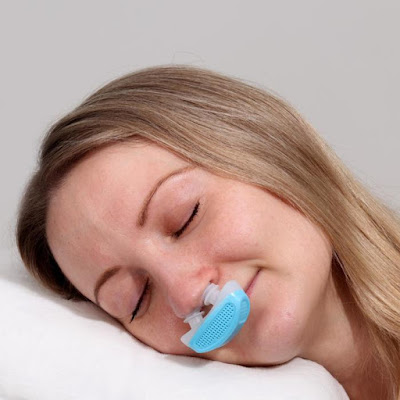Sleep Apnea Devices help in Breathing without interruption of Blockage in Airflow
 |
| Sleep Apnea Devices |
Sleep Apnea is a chronic
respiratory sleep disorder characterised by pauses in breathing while sleeping.
This is characterised by conditions such as shallow breathing or the occurrence
of sleep breaks and pauses. Pauses can be as short as a few seconds or as long
as several minutes. These disruptive events can occur several times throughout
the night. People who snore loudly are predisposed to Sleep Apnea. The return
of breathing after these pauses is usually accompanied by choking or snorting
sounds. Most people go undiagnosed for Sleep Apnea because it happens at night
and is difficult to detect during routine hospital visits.
Apnea is the squeezing of air
that passes through the blockage while breathing, resulting in loud snoring.
These obstructions are most common in overweight and obese people. Diabetes
patients are more likely to suffer from Sleep Apnea. Obstructive Sleep Apnea
(OSA), central Sleep Apnea (CSA), and mixed Sleep Apnea (a combination of the
two) are the three major types of Sleep Apnea. The most common type of Sleep
Apnea is Obstructive Sleep Apnea, in
which breathing is interrupted by a blockage of airflow.
Aside from obesity, other factors
such as smoking, hereditary existence, menopause, the use of sedative
medications, having a long neck, alcohol consumption, and poor sleeping habits
all contribute to the prevalence of this disorder. Sleep Apnea is most common
in the elderly population, where obesity rates are rising. According to Oventus
Inc., OSA affects approximately 3% to 7% of adult men and 2% to 5% of adult
females. Furthermore, 50% of the general population snores, indicating that
this population is a potential buyer of Sleep
Apnea Devices.
In 2014, approximately 100
million people worldwide were suspected of having OSA, though the vast majority
of this population remained undiagnosed. Multiple treatment options are
available for Sleep Apnea, including natural recovery through changes in daily habits
and lifestyle, as well as the use of Sleep Apnea Devices such as continuous
positive airway pressure (CPAP) devices or wearable forms such as mandibular
advancement devices (MAD), position pillows, dental devices, or tongue
retaining devices. In severe cases, Sleep Apnea can also be treated surgically.



Comments
Post a Comment